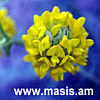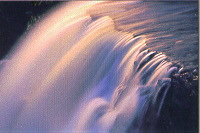 |
||||||||||||||||||||||||||||||||||
|
||||||||||||||||||||||||||||||||||
|
||||||||||||||||||||||||||||||||||
|
|||||||||||||||||||||||
 |
|||||||||||||||||||||||
| - | |||||||||||||||||||||||
|
||||||
7 Day moderately challenging hike/camping maximum altitude: 3597 meters Vayots Dzor seems to have it all: ancient monasteries and universities, stalactite filled caverns, pagan temples, and a meandering river canyon with towering peaks. And that's just for the road bound. For the hiker, there is even more in store, since the most unique features of the region are accessible only on foot, by following the well ancient paths taken by monks, caravans, and the earliest inhabitants in the region. One path leads to the top of Vayots Dzor, and to a volcanic chapel, while another leads to the bottom, to a subterranean church. The Safari leads from Yerevan to the Sulema Pass highway in the Vardenis mountain range. The road is one of the oldest in the world, an asphalt version of the ancient caravan trail that brought silk, spices, gold and porcelain from Asia into Mesopotamia and Asia Minor. Just before the Sulema Pass (2410 meters high) there is an 11th c. caravanserai, which is only the most recent lodgings built. Before that there were countless caravans plying their way between Asia and the West. Surmounting the Sulema Pass was the last great obstacle on the road to Mesopotamia, an event to be celebrated. The caravan loop to Yeghegis and Martiros begins on the Sulema Pass road (just before Yeghegnadzor), and turns off at Shamik. From there it is 8 kilometers to Yeghegis, another 2 to Alayaz and another 10 to the base of the volcano. Hehr Hehr is about 7 kilometers from the volcano, and 11 kilometers from Vaik. From Vaik it is 10 kilometers to Martiros. This safari veers off just before the Sulema Pass, and explores a series of ancient towns and monasteries, beginning with Shamik, where the 929 AD Shatin monastery and the nearby 1666 AD Tzatoor Bridge lie. Beginning there, the modern Caravan trekker can explore the medieval Siunik Kingdom capital of Yeghegis, and beyond, the chapel built in a volcano.
DAY 1: Yeghegis was built and rebuilt between the 5th and 11th cc. after a series of cataclysmic earthquakes. It now lies in ruins in a beautiful forested canyon. It was the capital of the Siunik Kingdom circa 10th-11th cc, and its ruins are still richly adorned with royal carvings and crests. Locals call it the "stone city" for its carved splendor, splendor that still defies the elements of time. Located on the left bank of the Yeghegis river, the city was huge in its heyday, stretching a half a kilometer wide and 2 to 3 kilometers long. Trees and stones now claim the site as their own, with the occasional visitor as a guest. In a pristine mountain wilderness, this area almost literally was the center for science, philosophy and religion in Armenia, and hundreds of manuscripts and treatises at the Matenadaran in Yerevan hold testament to a flowering learning at Yeghegis. The site is actually much older, going back to the 5th millennium BCE, but what remains to the amateur archeologist are the 5th-10th cc. Smbadaberd fortress, the 14th c. St. Nshan church and the foundations or partial walls of a once thriving city. DAYS 2-3: Further on is Arates, a 9th-14th cc monastery. The farthest end of Yeghegis is contemporary Alayaz and the 10th -11th cc Tsakhats Kar Church with a field of intricately carved Khachkars from the 10th-13th cc. and the 10th-13th-14th cc. Hermoni Monastery and the medieval city's graveyard with Khachkars. Continue on the Hehr caravan road to visit one of the religious and natural jewels in Armenia. Beginning at Vartahovit ("Rose Valley"), which is an excellent camping area, the expedition passes Karmerashen and its 12th c. Khachkar to the top of Vayots Sahr, a hangats herabukh (dormant volcano). Active in the Pleistocene era, the volcano is 2580 meters high, with a crater diameter of 600 meters. Descending 125 meters to the crater floor, you can sense the immense explosions that spewed fertile lava onto Vayots region and closed off Lake Sevan from its old southern territory. In the 14th c. a one person chapel was built in the crater floor, and it remains in good condition. One of a series of chapels and churches built in volcanic craters, the matura at Vayots Sahr follows a millennia long tradition of building sacred structures below the rim or crest of mountains and hills. Not a single church or temple in Armenia can be found at the top of a mountain, they are always set just below. This goes back further than medieval times, it is a pattern of construction found even at the mountain temples at Lechashen and at the numerous 5th to 3rd millennium Vishap (water dragon) monuments that can be found by natural springs and caves. DAYS 4-5: From Vayots Sahr, it is a one day hike to Hehr Hehr with its 8th-13th cc Sourb Sion monastery, a Medieval Fortress and field of Khachkars and Jermuk, a mineral water spa with spectacular waterfalls and the nearby Okhak Lehr valley with the 996 AD Gndevank church. Gndevank was built by Princess Sophia, the wife of Smbad, Prince of Siunik. Legend has it she had to sell her jewels to complete construction, and when it was finished, she had inscribed on the church walls, "Vayots Dzor was a ring without a jewel. I built Gndevank and set the jewel into the ring." The monastery is reached by climbing a hill on the other side of a spring fed river. It has some beautiful carvings and pieces of 10th c. gravestones leaning against the church walls, and the front courtyard is shaded by a towering walnut tree. Fresh clean spring water fills a stone carved trough nearby. Just 5 kilometers down the canyon road is the main highway to Sissian and Goris, and another 10 kilometers leads to the other side of Vayots Sahr, a plunging forest canyon with a chapel carved from stone at Martiros. Probably a pagan sacrificial site like that at Jerahovit, the cave church at Martiros has been converted to a Christian chapel and is by a field of 10th-13th cc Khachkars, some of the finest examples of stone carvings in Armenia. Continue up mountain trails into Jermuk Valley for a stay at the Jermuk Spa area. The mineral waters are renowned in the area for their therapeutic properties, and visits to spa ceners feature hot mineral baths, "water massages" and walks in the canyon forests. DAYS 6-7: Return by following the canyon road to the 10th-12th cc Proshaberd fortress, and the 14th c. Spitakavor Church, before ending at 13th c. Tanahat church and Gladzor Vardapetaran (university). Its libraries once filled with manuscripts on science, mathematics, medicine and philosophy, Gladzor was a font of wisdom and enlightenment in Armenia 200 years before the Renaissance in Europe. Return to Yerevan. _______________________________________________ This Itinerary can be guided by the EcoTourism Association, contact Zhanna at 32/22 Shinararneri st., 375038 Yerevan, Armenia. Phone: (3741) (3741) 27 87 28 / 39 75 52 / E-mail: zhanna@freenet.am. Their services include guide/translator, transportation to/from Yerevan to base, backup vehicle and staff, all camping equipment and meals.
Armenian
Botanical Society INDIVIDUAL
TRIP REPORTS GUIDES
/ TOURS Adventure, Eco Tour Groups in Armenia
|
| |
Search | |
||||||



